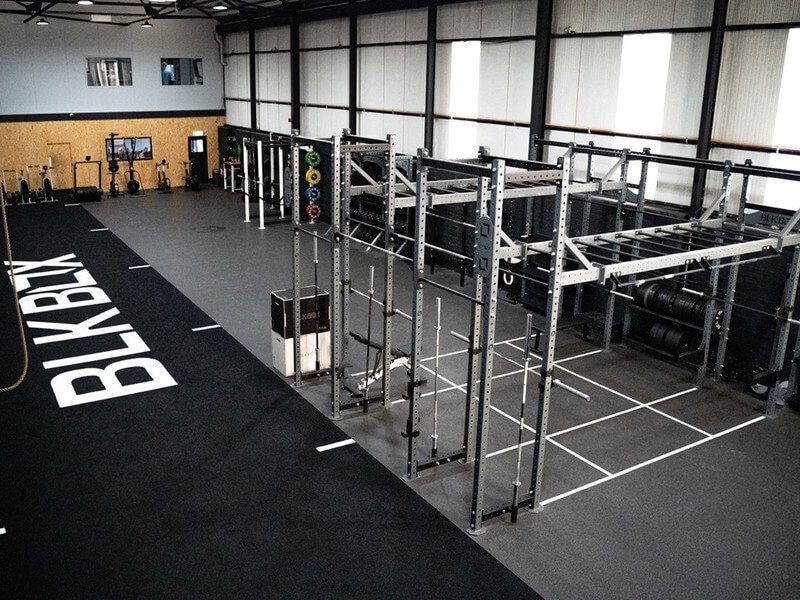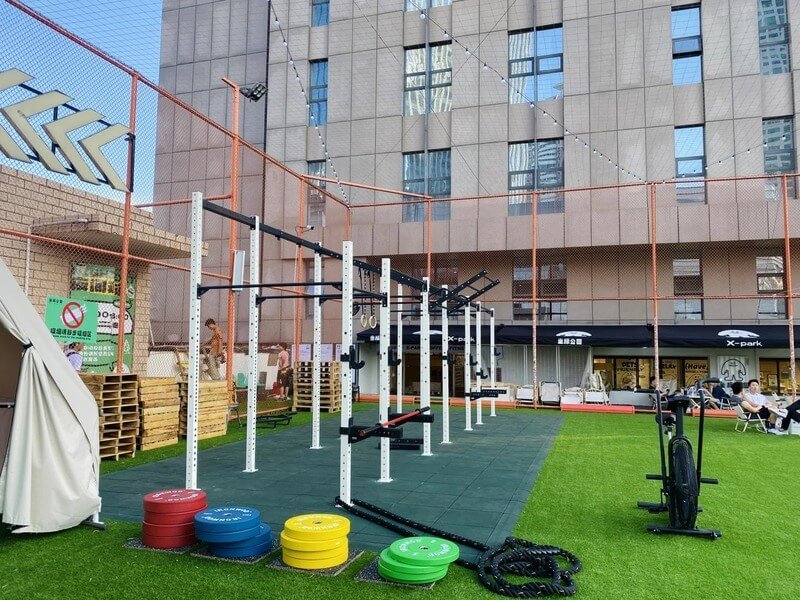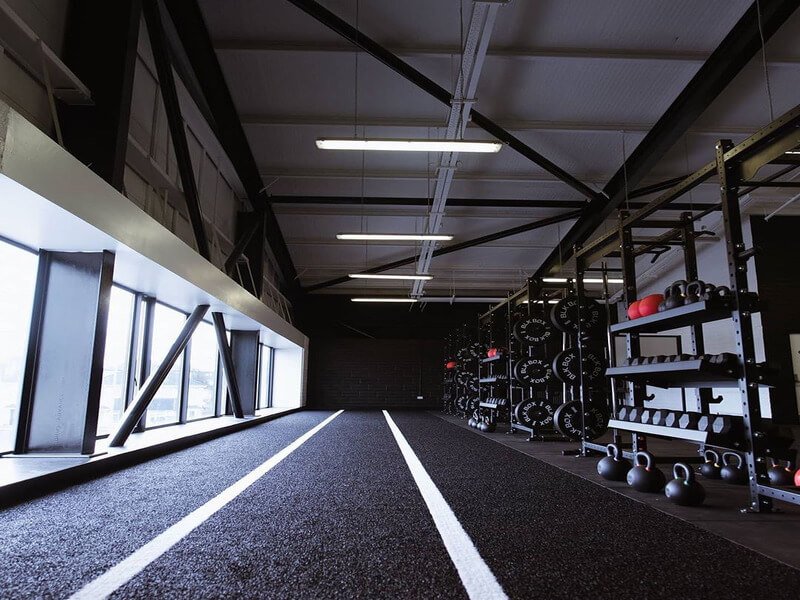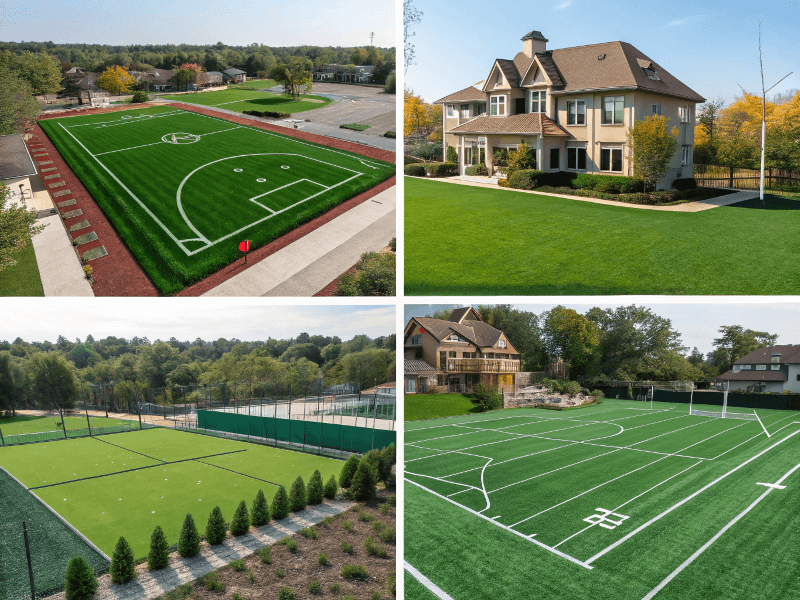Die Entscheidung zwischen gepolstertem und ungepolstertem Kunstrasen hängt von Ihren spezifischen Anforderungen an Sicherheit, Komfort und Anwendung ab. Gepolsterter Kunstrasen enthält eine 5 mm dicke PU-Dämpfungsschicht für eine bessere Stoßdämpfung, während ungepolsterter Kunstrasen eine festere Oberfläche ohne zusätzliche Polsterschichten bietet.
Als ich anfing, mit Kunstraseninstallationen zu arbeiten, lernte ich schnell, dass die Entscheidung über die Polsterung den entscheidenden Unterschied ausmacht. Bei der Polsterschicht geht es nicht nur um Komfort - sie verändert grundlegend, wie die Oberfläche funktioniert, sich anfühlt und die Nutzer schützt. Nachdem ich jahrelang Kunden bei der Auswahl zwischen diesen Optionen geholfen habe, habe ich gesehen, wie die richtige Wahl einen Platz von angemessen zu außergewöhnlich machen kann.
Gepolsterter Kunstrasen verfügt über eine 5 mm dicke Polyurethan (PU)-Dämpfungsschicht, die direkt mit der Grasfaserunterlage verbunden ist. Diese Polsterung sorgt für zusätzliche Stoßdämpfung und ein weicheres Gefühl unter den Füßen. Die Polsterung reduziert die Belastung der Gelenke beim Laufen, Springen oder Fallen und macht den Rasen bei starker Beanspruchung deutlich sicherer. Da die Polsterung in das Rasensystem integriert ist, wird kein zusätzliches Füllmaterial wie Gummigranulat oder Sand benötigt, was den Pflegeaufwand reduziert und die Oberfläche konstant sauber hält.

Wenn Sie diese grundlegenden Unterschiede verstehen, können Sie eine fundierte Entscheidung treffen, die Ihren spezifischen Anforderungen und Nutzungsmustern entspricht.
Was hebt den gepolsterten Rasen von den Standardoptionen ab?
Der gepolsterte Rasen enthält eine 5 mm dicke PU-Schaumstoffschicht, die eine hervorragende Stoßdämpfung, Gelenkschutz und Geräuschdämpfung bietet. Dieses integrierte Dämpfungssystem schafft eine sicherere, komfortablere Oberfläche, ohne dass herkömmliche Füllmaterialien für die Leistung erforderlich sind.
Die integrierte PU-Polsterung verändert die Leistung des Rasens in mehreren Dimensionen. Unter dem Gesichtspunkt der Sicherheit verringert die Polsterschicht das Verletzungsrisiko bei Stürzen erheblich, da sie eine gleichmäßige Stoßdämpfung bietet. Dies macht den gepolsterten Rasen ideal für Spielplätze, wo er die kritischen Sicherheitsstandards für Fallhöhen erfüllt. Die Polsterung verringert auch die Ermüdung der Gelenke bei längeren Aktivitäten, was nach meiner Beobachtung für Sportler und Fitnessbegeisterte, die stundenlang auf der Oberfläche trainieren, einen echten Unterschied macht.
Leistungsvorteile von gepolsterten Systemen
Die Dämpfungsschicht bietet drei entscheidende Vorteile gegenüber herkömmlichen Oberflächen. Erstens bietet sie eine gleichmäßige Stoßdämpfung, die nicht von der Verteilung der Füllung oder dem Verdichtungsgrad abhängt. Zweitens reduziert die Schaumstoffschicht die Geräuschübertragung und eignet sich damit perfekt für Innenräume oder Wohngebiete, in denen Schallschutz wichtig ist. Drittens schafft die integrierte Polsterung eine stabilere Oberfläche, die ihre Leistungsmerkmale über die Zeit beibehält, ohne dass die Füllung neu verteilt oder gewartet werden muss.
Überlegungen zur Installation und Vielseitigkeit
Gepolsterte Rasensysteme sind in erster Linie für den Innenbereich konzipiert, was ihre Einsatzmöglichkeiten einschränkt, aber den Auf- und Abbau erheblich erleichtert. Das Fehlen von losem Füllmaterial bedeutet einen schnelleren Auf- und Abbau, was diese Systeme ideal für temporäre Installationen oder Mietanlagen macht. Das saubere, geschlossene System beseitigt auch die Probleme, die bei herkömmlichen gefüllten Oberflächen auftreten können, wie z. B. Verlaufen und Verschütten.

Diese Eigenschaften machen Polsterrasen besonders wertvoll für gewerbliche Flächen, die langlebige, pflegeleichte Grünflächen mit verbesserten Komfort- und Sicherheitsmerkmalen benötigen.
Wann ist ein ungepolsterter Rasen sinnvoller?
Nicht gepolsterter Rasen bietet eine festere Oberfläche ohne integrierte Dämpfungsschichten und eignet sich daher sowohl für Innen- als auch für Außenbereiche. Diese Vielseitigkeit in Verbindung mit niedrigeren Anschaffungskosten macht ihn zur praktischen Wahl für die Landschaftsgestaltung und mäßig beanspruchte Erholungsgebiete.
Nicht gepolsterter Kunstrasen ist die traditionelle Art der Verlegung von Kunstrasen. Ohne die 5 mm dicke PU-Polsterschicht beruhen diese Systeme auf ihrer Unterlagsstruktur und der Vorbereitung des Untergrunds für die Leistungsmerkmale. Das Fehlen einer integrierten Polsterung führt zu einem festeren Gefühl, das einige Nutzer bevorzugen, insbesondere bei Anwendungen, bei denen Bodenkontakt und Stabilität wichtiger sind als Stoßdämpfung.
Langlebigkeit und Wetterbeständigkeit im Freien
Ein wesentlicher Vorteil der nicht gepolsterten Systeme besteht darin, dass sie den Bedingungen im Freien standhalten können. Diese Installationen können Witterungseinflüssen, Temperaturschwankungen und UV-Strahlung standhalten, die gepolsterten Systemen in Innenräumen schaden würden. Die Trägermaterialien und die Faserkonstruktion sind so konzipiert, dass sie gegen Risse und das Ausbleichen durch Sonneneinstrahlung beständig sind, so dass sie sich für dauerhafte Installationen im Freien eignen, z. B. für Rasenflächen in Wohngebieten, gewerbliche Grünanlagen und Erholungsgebiete.
Kosteneffiziente Lösungen für verschiedene Anwendungen
Nicht gepolsterter Rasen erfordert in der Regel geringere Anfangsinvestitionen als gepolsterte Alternativen. Dieser Kostenvorteil macht sie attraktiv für budgetbewusste Projekte oder großflächige Installationen, bei denen die Premiumfunktionen von gepolsterten Systemen nicht erforderlich sind. Die Vielseitigkeit der Verwendung im Innen- und Außenbereich bedeutet auch, dass ein Produkt für mehrere Anwendungen eingesetzt werden kann, was die Lagerhaltung vereinfacht und die Komplexität für Bauunternehmer und Facility Manager verringert.
Faktoren für Wartung und Langlebigkeit
Nicht gepolsterte Systeme erfordern zwar mehr Aufmerksamkeit bei der Vorbereitung des Untergrunds und der gelegentlichen Pflege der Oberfläche, erweisen sich aber im Laufe der Zeit für Außenanwendungen oft als wirtschaftlicher. Durch die Möglichkeit, die Verlegung zu erneuern oder anzupassen, ohne dass eine spezielle Polsterung ausgetauscht werden muss, bleiben die langfristigen Kosten überschaubar. Die festere Oberfläche bedeutet jedoch einen geringeren Aufprallschutz, was in Bereichen mit hoher Aktivität zu einem höheren Verletzungsrisiko führen kann.

Der Schlüssel liegt in der Abstimmung der Oberflächeneigenschaften auf Ihre spezifischen Nutzungsmuster und Sicherheitsanforderungen.
Wie beeinflussen die Sicherheitsanforderungen Ihre Wahl?
Sicherheitserwägungen sollten bei der Auswahl des Rasens eine Rolle spielen, wobei gepolsterte Systeme einen hervorragenden Aufprallschutz für risikoreiche Aktivitäten bieten und nicht gepolsterte Oberflächen einen angemessenen Schutz für Freizeitaktivitäten mit geringerer Belastung.
Nach meiner Erfahrung als Berater bei der Verlegung von Rollrasen haben die Sicherheitsanforderungen oft Vorrang vor anderen Überlegungen. Gepolsterter Rollrasen eignet sich hervorragend für Umgebungen, in denen Stürze oder Aktivitäten mit hoher Stoßbelastung häufig vorkommen. Die integrierte Polsterung erfüllt die Sicherheitsstandards für Spielplätze und bietet die erforderliche Stoßdämpfung für Sporttrainingseinrichtungen, Turnhallen und Kinderspielplätze.
Kritische Fallhöhe und Aufprallstandards
Gepolsterte Rasensysteme sind speziell für die Einhaltung von Sicherheitsstandards für kritische Fallhöhen konzipiert. Das macht sie zu einem unverzichtbaren Bestandteil von Spielplatzanlagen, bei denen die Einhaltung von Vorschriften vorgeschrieben ist. Die gleichbleibende Dämpfungsleistung hängt nicht von der Verteilung der Füllung oder der Wartung ab und gewährleistet einen zuverlässigen Schutz über die gesamte Lebensdauer der Oberfläche. Für haftungsbewusste Facility Manager ist diese vorhersehbare Sicherheitsleistung eine wertvolle Sicherheit.
Aktivitätsspezifische Sicherheitsüberlegungen
Verschiedene Aktivitäten stellen unterschiedliche Anforderungen an die Sicherheit. Ein hochintensives Training mit Sprints, Sprüngen und Beweglichkeitsübungen profitiert in hohem Maße von dem Gelenkschutz, den gepolsterte Oberflächen bieten. Umgekehrt erfordern Aktivitäten wie Putten oder lockeres Gehen möglicherweise keine erstklassige Dämpfung und könnten sogar von dem festeren Gefühl ungepolsterter Oberflächen profitieren.
Langfristige Sicherheitsleistung
Die Sicherheitseigenschaften von gepolsterten Systemen bleiben im Laufe der Zeit konstant, da die Dämpfung in die Rasenstruktur integriert ist. Bei nicht gepolsterten Systemen kann es zu Leistungsänderungen kommen, wenn sich der Untergrund setzt oder sich die Oberflächenbedingungen ändern, was sich möglicherweise auf das Sicherheitsprofil auswirkt. Regelmäßige Inspektionen und Wartungen sind für die Aufrechterhaltung der Sicherheitsstandards bei nicht gepolsterten Anlagen von entscheidender Bedeutung.

Wenn Sie diese Sicherheitsaspekte verstehen, können Sie sicherstellen, dass die von Ihnen gewählte Grasnarbe die Benutzer für Ihre spezielle Anwendung angemessen schützt.
Was sind die Auswirkungen auf die Kosten in der Praxis?
Während gepolsterter Rasen eine höhere Anfangsinvestition erfordert, kann er sich für Innenanwendungen aufgrund der geringeren Wartungskosten und der einfacheren Installation als wirtschaftlicher erweisen. Nicht gepolsterter Rasen bietet budgetfreundliche Einstiegskosten, kann aber für eine optimale Leistung mehr laufende Pflege erfordern.
Die Kostenanalyse geht über den Anschaffungspreis hinaus und umfasst auch Überlegungen zu Installation, Wartung und Ersatz. Gepolsterte Systeme erfordern aufgrund der integrierten PU-Schicht und der speziellen Herstellungsanforderungen einen höheren Preis. Bei geeigneten Anwendungen kann dieser Aufpreis jedoch durch den geringeren Installationsaufwand und die geringeren Wartungsanforderungen gerechtfertigt sein.
Faktoren für die Installationskosten
Die Verlegung von Kunstrasen ist in der Regel schneller und sauberer, da kein Füllmaterial und keine aufwändige Untergrundvorbereitung erforderlich sind. Dies kann einen Teil der höheren Materialkosten durch geringere Arbeitskosten ausgleichen. Die Verlegung von nicht gepolstertem Rasen kann mehr Zeit für die ordnungsgemäße Vorbereitung des Untergrunds und die Endbearbeitung erfordern, aber die Materialien selbst kosten anfangs weniger.
Langfristige Wertüberlegungen
Für Innenbereiche, in denen gepolsterter Rollrasen geeignet ist, kann der langfristige Nutzenvorteil überzeugend sein. Da kein Füllmaterial benötigt wird, entfallen die Kosten für den laufenden Austausch und die Neuverteilung. Die einfache Entfernung und Neuverlegung ist auch bei temporären oder saisonalen Installationen von Vorteil. Für Außenanwendungen, bei denen gepolsterter Rasen nicht geeignet ist, sind ungepolsterte Systeme jedoch die einzige praktikable Option, unabhängig von Kostenüberlegungen.
Analyse der Investitionsrentabilität
Die Berechnung des ROI hängt stark von den Nutzungsmustern und Anwendungsanforderungen ab. Hochfrequentierte Trainingseinrichtungen können die Kosten für gepolsterten Rasen durch geringere Verletzungsgefahr und Zufriedenheit der Nutzer rechtfertigen. Anwendungen zur dekorativen Landschaftsgestaltung generieren selten einen ausreichenden Wert, um Premiumpreise zu rechtfertigen, so dass nicht gepolsterte Systeme die logische Wahl sind.

Eine sorgfältige Analyse Ihrer spezifischen Situation hilft, die kosteneffizienteste Lösung für Ihre Bedürfnisse zu finden.
Welche Anwendungen profitieren am meisten von jedem Typ?
Gepolsterter Rollrasen eignet sich hervorragend für Indoor-Trainingseinrichtungen, Turnhallen und Spielplätze, wo Sicherheit und Komfort an erster Stelle stehen. Nicht gepolsterter Rasen eignet sich am besten für Außenanlagen, Putting Greens und mäßig beanspruchte Freizeitbereiche, wo Vielseitigkeit und Wetterbeständigkeit am wichtigsten sind.
Nach der Arbeit mit Hunderten von Installationen habe ich klare Muster identifiziert, welche Anwendungen am meisten von jedem Rasentyp profitieren. Die Entscheidung läuft oft darauf hinaus, die Oberflächeneigenschaften mit den beabsichtigten Nutzungsmustern und Umgebungsbedingungen abzustimmen.
Ideal für gepolsterte Rasenflächen
Indoor-Trainingseinrichtungen sind der ideale Ort für gepolsterte Rasensysteme. Die kontrollierte Umgebung schützt das System vor Witterungsschäden, während die Polsterung einen wesentlichen Schutz für hochintensive Aktivitäten bietet. Fitnesszentren, Schlagkäfige und Mehrzweck-Trainingsbereiche profitieren von der hervorragenden Aufpralldämpfung und Lärmreduzierung. Spielplätze sind ebenfalls ein erstklassiges Gebiet für gepolsterte Rasenflächen, wo die Einhaltung von Sicherheitsstandards und der Schutz von Kindern vor Verletzungen Vorrang vor Kostenüberlegungen haben.
Optimale Nutzung von nicht gepolstertem Rollrasen
Im privaten und gewerblichen Landschaftsbau werden ungepolsterte Systeme wegen ihrer Haltbarkeit und Kosteneffizienz bevorzugt. Bei diesen Installationen haben Aussehen und geringer Wartungsaufwand Vorrang vor erstklassigen Leistungsmerkmalen. Putting-Greens profitieren von den festeren Oberflächeneigenschaften der ungepolsterten Systeme, die die von Golfern erwartete Konsistenz des Ballrollens bieten. Haustierbereiche mit mäßiger Nutzung eignen sich ebenfalls gut für nicht gepolsterte Systeme, da sie eine saubere, haltbare Oberfläche ohne die hohen Kosten einer integrierten Polsterung bieten.
Überlegungen zur Vielseitigkeit und Flexibilität
Nicht gepolsterte Systeme bieten durch ihre Innen-/Außenfähigkeit eine überragende Vielseitigkeit. Diese Flexibilität macht sie wertvoll für Einrichtungen, die einheitliche Oberflächen in verschiedenen Umgebungen benötigen, oder für saisonale Installationen, die zwischen Innen- und Außenbereichen wechseln. Der breitere Anwendungsbereich vereinfacht auch die Produktauswahl und das Bestandsmanagement für Auftragnehmer, die verschiedene Märkte bedienen.

Die Abstimmung Ihrer spezifischen Anwendungsanforderungen auf das geeignete Rasensystem gewährleistet optimale Leistung und Wert.
Schlussfolgerung
Die Wahl zwischen gepolstertem und nicht gepolstertem Rasen hängt letztendlich von Ihren spezifischen Sicherheitsanforderungen, Budgetbeschränkungen und beabsichtigten Anwendungen ab, wobei gepolsterte Systeme sich in Innenräumen mit hoher Beanspruchung auszeichnen und nicht gepolsterte Systeme vielseitige Lösungen für den Außenbereich bieten.
Sind Sie bereit, die perfekte Rasenlösung für Ihr Projekt zu finden? Kontaktieren Sie uns noch heute, um ein kostenloses Angebot und ein Musterkit zu erhalten. Unsere Rasenexperten helfen Ihnen bei der Auswahl zwischen gepolstert und ungepolsterte Optionen auf der Grundlage Ihrer spezifischen Bedürfnisse, damit Sie die ideale Balance zwischen Sicherheit, Leistung und Wert erhalten. Warten Sie nicht - fordern Sie jetzt Ihre kostenlose Beratung und Muster an und überzeugen Sie sich selbst vom Qualitätsunterschied!

![2a7a49e1ece5f50de875cffe624dab51[1]](https://meettfit.com/wp-content/uploads/2025/06/2a7a49e1ece5f50de875cffe624dab511.jpg)